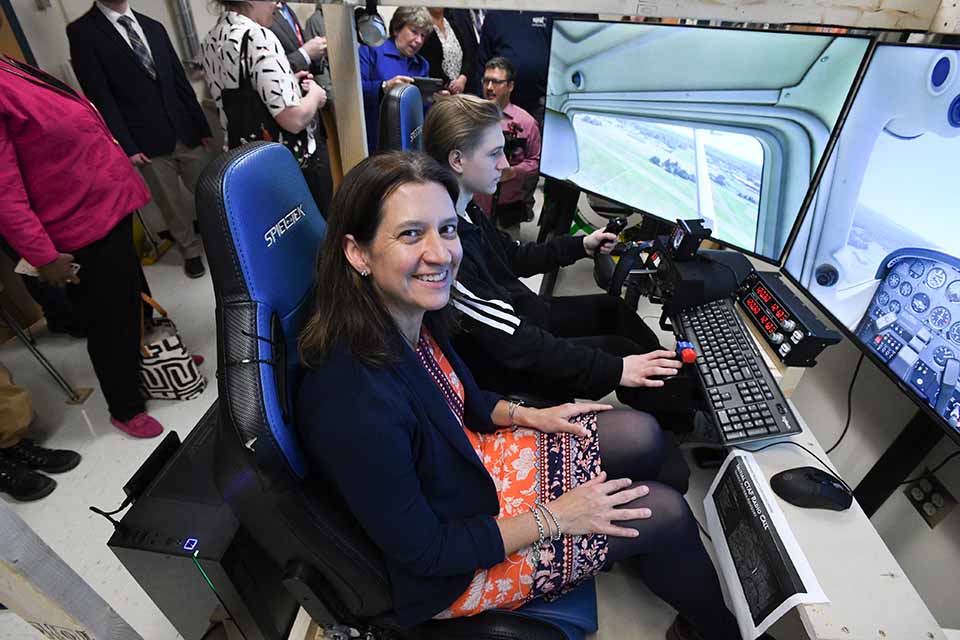When it comes to creating a career pathway for students, Career and Technical Education works. In fact, many students graduate from high school with the credentials they need to move right into a job, usually in a high-demand field.
Along with making students career ready, CTE reinforces classroom lessons, showing students the practical applications for their academic studies.
“It’s important to show students where something is going to take them,” said Linda Romano, health science educator at Newburgh Free Academy and President of the New York State Association of Career and Technical Education. “Career and Technical Education connects lessons they’re learning in the classroom with the real world, using a subject they’re interested in, like nursing,”
This week, NYSUT leaders toured schools in Syracuse to learn how students are getting access to quality Career and Technical Education programs that offer hands-on, experiential learning in a wide variety of fields – from car repairs to aeronautics and construction courses. NYSUT leaders also toured Tech Valley High School in Rensselaer to learn more about fascinating project-based learning opportunities for students.
Project- and skills-based learning provides opportunities for students to see school subjects like math and ELA come to life. In CTE classrooms, figures and words jump off the page and become project budgets, essential measurements like teaspoons and grams, data to chart and analyze and funding proposals.
CTE can also be a powerful tool for keeping kids in school, meeting them where their interests are and coaxing them forward to graduation. According to Advance CTE, a national non-profit that represents State CTE Directors and state leaders of Career Technical Education, New York high school students who take CTE courses boast a 92 percent graduation rate, and 98 percent of them go on to pursue post-secondary education.

NYSUT executive director/political director Melinda Person sits in a flight simulator during a tour of CTE facilities in Syracuse. Photo by El-Wise Noisette.
Despite its proven benefits, CTE is still not available to many students across the state. In fact, demand for CTE far outstrips supply. Student enrollment in NYS CTE programs is topping out at 270,083, but there are just 6,740 CTE instructors to meet that need.
Students aren’t the only ones who need CTE; Employers need this specialized training, too. Many of the state’s biggest industries, including health care, human services, business, marketing food service and information technology have jobs that require a level of skills training that is more than high school provides, but less than a four-year college – just the target zone of CTE. Currently only 37 percent of New Yorkers have those “middle skills,” and that’s leaving a lot of jobs unfilled.
In March, BOCES faculty from across the state lobbied for more funding at the New York State capitol and asked state lawmakers to lift a decades-old cap that limits state support for CTE instructor salaries.
“The current aid formula for BOCES CTE programs has not changed since 1990, and the state only provides aid for the first $30,000 of a BOCES instructor’s salary,” said NYSUT President Andrew Pallotta. As a result, local districts are covering the majority – upwards of 70 percent - of CTE instructor salaries, even though the state agreed it would pick up the lion's share of these costs. Lobbyists also advocated for a scholarship and loan forgiveness program that would reduce expenses related to teacher education.
CTE training can take place in secondary schools or at an off-site BOCES-operated center. In both settings, instructors try to give students opportunities to explore careers by visiting worksites and shadowing employees. In some fields, like Health Education, clinical hours are required to achieve certification – but that can be tricky when you don’t have enough bus money.
“We don't have enough funding to support career exploration rotations,” said Romano. “These experiences need to happen.”